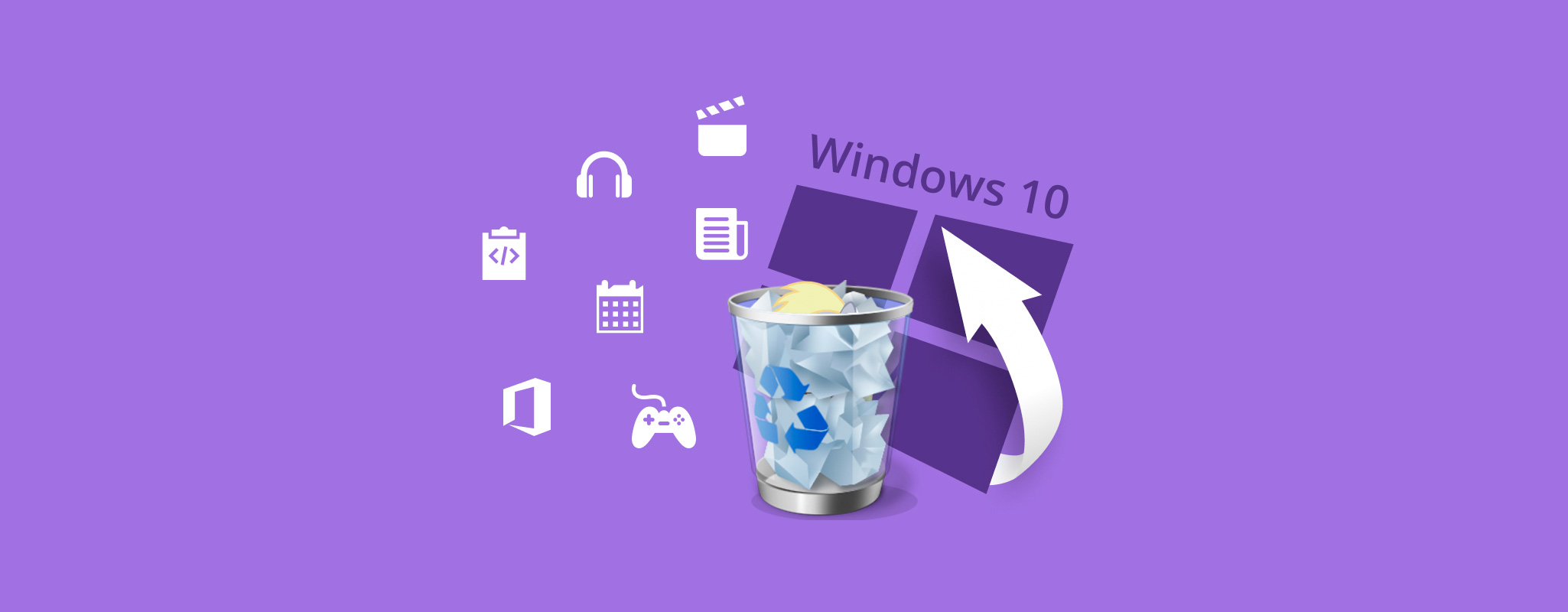 Uninstalling programs is an effective way to free up storage space. But, what if you accidentally uninstall the wrong program? You may accidentally delete the program’s .exe file, or the program folder. Is there a way to get the program and its associated files back? Well, yes. You can recover uninstalled programs and the files they generated, on Windows 10. However, you must be proactive and carefully follow the instructions in the sections below.
Uninstalling programs is an effective way to free up storage space. But, what if you accidentally uninstall the wrong program? You may accidentally delete the program’s .exe file, or the program folder. Is there a way to get the program and its associated files back? Well, yes. You can recover uninstalled programs and the files they generated, on Windows 10. However, you must be proactive and carefully follow the instructions in the sections below.
Table of Contents
Why Do Programs Get Uninstalled?
Often, it’s the users—whether intentionally or unintentionally—who uninstall a program. However, it’s also possible the programs were uninstalled with no fault of the user. By determining why the program was uninstalled, you can take the relevant measures to get it back.
Here are some common reasons why a Windows program was uninstalled:
- 🚨 Accidental Deletion: Mistakes happen. You may accidentally uninstall the wrong program, delete the program’s .exe file, or wipe the program’s parent folder. All these actions render the program inaccessible.
- 🎁 End of Trial: Most paid programs come with a free trial that lets you explore some, or all, of the program’s features for a specific time period. Once the trial period expires, you lose access to the program. Rarely, the program could be uninstalled once the trial period expires.
- 🕷️ Malware: Virus and other malware infections are one of the leading culprits behind data loss. Even with property security measures, it’s still possible for malware to infect your PC. Once in, malware can lock you out of your PC, wipe out your files, uninstall your programs, and steal your data.
- 🔔 Windows Update: Windows Updates are notorious for wiping out large folders and uninstalling programs without the user’s permission. This usually happens when upgrading to a major Windows build or upgrading from Windows 10 to Windows 11. However, Windows often creates a Restore Point before major updates, allowing you to recover any uninstalled programs.
- 🗄️ Freeing Up Storage Space: The Storage Sense feature on Windows periodically clears up temporary files and the Recycle Bin to free up storage space. It clears up the C:\Users\<username>\AppData\Temp folder. While most programs don’t store anything important in the Temp folder, some do. In an attempt to free up storage space, Storage Sense can delete some crucial files of programs that rely on the Temp folder.
What’s the Difference Between Uninstalling and Deleting a Program?
There are several differences between uninstalling and deleting a program. If you’re sure you no longer need a program, it’s best to uninstall it. Only resort to deletion if the uninstallation process fails, or is unavailable for some reason.
Uninstalling a program is done through the Apps & Features section on Windows 10, or the uninstallation wizard .exe file in the program’s main folder. Uninstalling a program entails removing the program’s core files, the associated settings, and its Registry entries. Uninstallation also removes the program’s temporary files and dependencies. Hence, uninstalling a program ensures its complete removal, preventing any of its settings and files from interfering with other programs and Windows functions.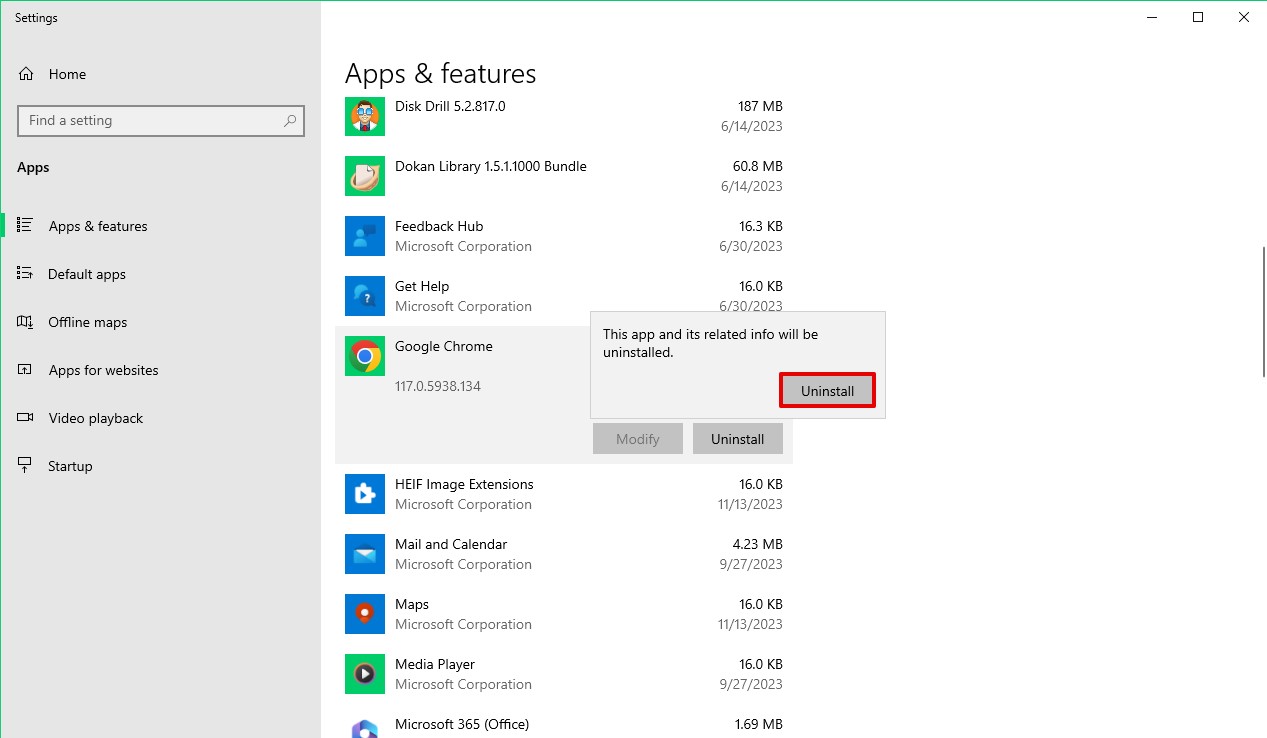
Some users often mistake deletion for uninstallation. Removing a program’s .exe file, desktop shortcut, or primary folder doesn’t uninstall the program. You simply deleted these files. They can be restored via the Recycle Bin, or using third-party data recovery programs. Additionally, a deleted (but not uninstalled) program’s temporary files, settings, and Registry entries remain on your PC. Often, these residual settings and files can interfere with the installation of other programs.
So, how does a program’s uninstallation, and deletion, affect the data recovery process?
A program’s uninstallation cannot be magically undone. While you may be able to retrieve all the program’s core files using specialized data recovery tools, the program will not work properly until it’s reinstalled.
In case of deletion, you can undo the data loss using third-party tools or the Recycle Bin. Since the program’s settings and Registry entries were unaffected, it will work like it did earlier.
How Can I Recover Uninstalled Programs?
First, think about whether you want your data files back or not. If the data is not essential to you and you want to re-run your programs, the easiest thing is to reinstall the program.
On the other hand, if you want to recover your data files, things are slightly tricky. In such a case, you need to recover the .exe file and the removed files the program generates. If this is your case, we have a few methods you can try.
Method 1: Use System Restore
System Restore is a feature in Microsoft Windows that allows users to return to a saved point on their computer. This includes system files, installed applications, Windows Registry, and system settings. Thus, it can be used to recover from system malfunctions or other problems. You can use this feature to recover uninstalled programs as well.
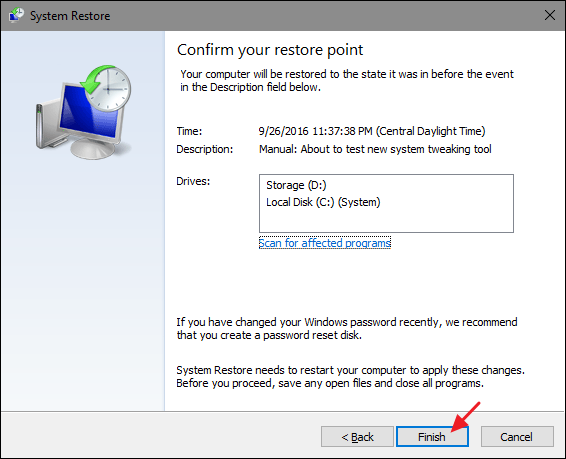
Restore points are generated when you install a new app, driver, or Windows update. Restoring won’t affect your personal files, but it will remove apps, drivers, and updates installed after the restore point was made.
Here’s how you can restore from a Windows System Restore Point:
Step 1. Select the “Start” button and click “Settings (the gear icon)”.
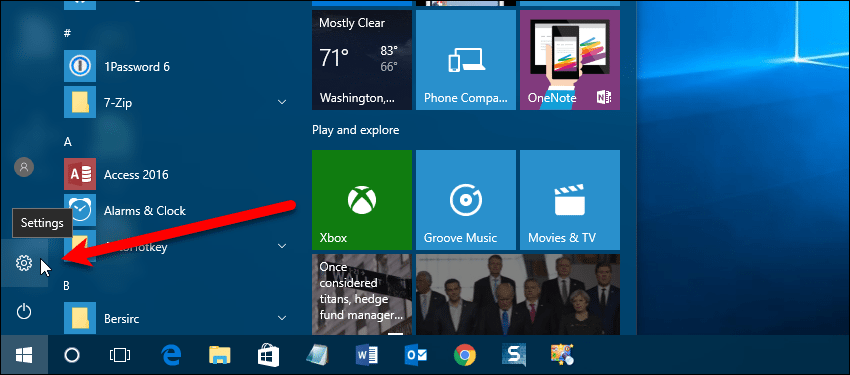
Step 2. Search for Recovery in Windows Settings.
Step 3. Select Recovery > Open System Restore > Next.
Step 4. Choose a restore point that is earlier than you uninstall the program and click Next.

If you don’t see any restore points, it might be because system protection isn’t turned on (the option is on by default). To check it, go to the Control Panel, search for Recovery, and then select Recovery> Configure System Restore> Configure and make sure Turn on system protection is selected.
From this point on, Windows will start making System Restore Points. However, you will not be able to restore your system to an older point. In such a case, your option is to use data recovery software.

Method 2: Use Data Recovery Software
Third-party data recovery tools make data recovery quick and accessible for the average user. But, there are an overwhelming number of data recovery programs on the web, all claiming to be the best. So, it’s important to do your research when choosing one.
We recommend you use a third-party tool when trying to recover data from the %AppData% folder that may have been deleted during Windows Update. Additionally, data recovery tools are a viable option when recovering specific files that were part of the uninstalled program (like an .exe file).
For this tutorial, we opted to use Disk Drill. With its user-friendly interface, and advanced data recovery algorithm, Disk Drill ensures that your files are recovered without any hiccups. The program supports all major file systems and storage device types across Windows and macOS. Windows users can take advantage of Disk Drill’s free trial that lets them recover up to 500 MB of data for free.
Here’s how to recover deleted or uninstalled programs, using Disk Drill:
Step 1. Download and Install Disk Drill recovery software for Windows. Provide it with the administrator’s privileges when prompted. The free trial allows you to recover up to 500 MB of data for free and gives you permanent access to the data protection tools included with the application.

Step 2. Select the disk that contained lost programs from the list displayed in the application’s main window. 
Step 3. Click the Search for lost data button to initiate the scanning algorithms and find your deleted files.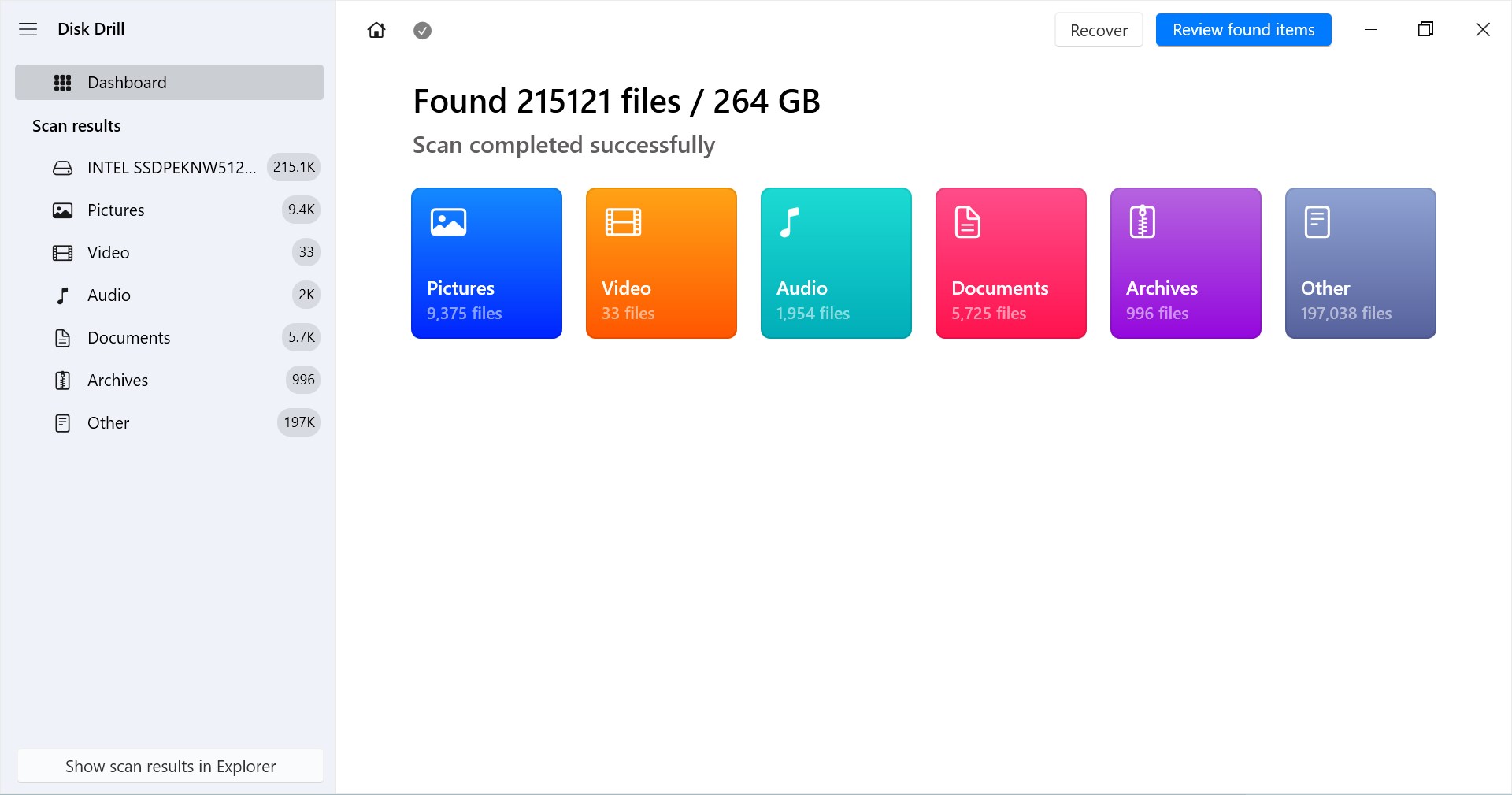
Step 4. When the scanning process has completed or you have paused the scan, you can view the uninstalled programs. Select the ones that you would like to recover and click the Recover button.
Step 5. You will then be prompted to choose a storage location to save the data Disk Drill is recovering. Do not use the same disk that experienced the data loss to prevent overwriting or corrupting the files you wish to recover.
Conclusion
Programs that are deleted intentionally by users or unknowingly through Windows 10 updates can be recovered. While several programs do not generate essential data files, some associated files might be crucial to users. If you have lost your programs due to some process, it can be unpleasant but has a few simple solutions.
Your best bet to recover uninstalled programs is to restore the system to an old point using System Restore, which will retrieve your programs and their associated files. However, if System Restore is inactive, you will not be able to use this method. In this case, data recovery tools are your best friend. You will be able to rescue most of your data in this way.
FAQ:
- Click the Start button at the bottom left and type restore in the search box and select Create a restore point.
- In the tab System Protection, click System Restore.
- In Restore system files and settings, click Next.
- Click Show more restore points to view the previous restore points list. You can select the one to check out whether the programs are affected or not by clicking Scan for affected programs. Click Close. Last, select the restore point to uninstall programs you need in Windows 7.
- Download and install the program
- Select your disk and begin scanning it
- Wait for the process to complete, and then view the files the program found
- Select files to recover and then recover them
- Click Start, type system restore in the Start Search box, and then click System Restore in the Programs list.
- If you are prompted for an administrator password or confirmation, type your password or click Continue.
- In the System Restore dialog box, click Choose a different restore point, and then click Next.
- In the list of restore points, click a restore point created before you began to experience the issue, and then click Next.
- Click Finish. The computer will restart, and the system files and settings will be returned to the state that they were at when the restore point was created. Alternatively, you can locate the setup files for your uninstalled programs and reinstall them.
- Type Event Viewer in the Search box on your Taskbar and open it
- Navigate to Windows Logs > Application
- Sort the list by the Source column, then scroll and view the information events produced by ‘MsiIntaller’




